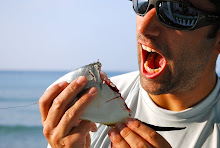I’ve been asked by enough people now to finally get my ass in gear and write this post. So here we go…
I am by no means an expert here, but I’ve pursued carp for long enough to have a solid handle on how to approach fly fishing for this amazing species. First off you need to find them. As for the boys and I, we struggled to find good carp water for a long time. Now that we did I have had the chance to study them, I guess since I’m an Organismal Biology major at school I approached the situation scientifically, which ultimately lead me to success.
The Ins And Out’s
Once you’ve found a body of water that contains carp, preferably a good amount of them. Wear neutral colored clothing, and be more cautious than you’ve ever been your entire life when trying to locate them in the water, carp are a very spooky fish. Carp in my opinion have three things in which they could be doing, feeding or “mudding”, cruising, or sunning themselves near the surface.
Your best bet is to fish for mudding or cruising fish. Mudding fish are the most easily caught obviously because they’re actively looking for food. I’ve found most carp enjoy mudding right along the shoreline, creeping along in the shoreline foliage (with your rod at the ready) is the best way to spot them. Once you’ve located a fish, don’t move anything but your rod. Depending on what you see, if just a mud plume…watch closely (polarized glasses are a must) look for its tail, then place your fly 4-6 feet in front of it. Slowly, and I mean slowly bring your fly into the fish’s line of vision. If you just pull your fly up to the fish, this un-natural movement and vibration will send the fish in the other direction. If done correctly with the right fly, the carp will see it, and since already in feed mode will inhale it (by far the easiest way to fish for carp).
Cruisers on the other hand are somewhat tricky for a few reasons. One, they like to cruise in shoals…spook one and your done. Two, they are more aware of they’re surroundings, place the fly too close, or even worse, right on top of them and kiss your chances good-bye. You need to place your fly ahead of cruisers quite far not to alarm them. Depending on how far away the fish is, watch your fly sink and watch the fish’s body language. If too far away to see your fly, body language is your only way to know when to set the hook. Watch for head down tail up, or a lazy turn in the direction of where you think your fly is and set the hook, practice makes perfect at that part of the game.
Sunning fish are the hardest to coax into taking your fly, I’ve done it, but these fish are so easily spooked. Use the same technique as the cruisers, give a generous lead and slowly swim your fly past the fish. The majority of the time the sunning fish will bolt once its seen the fly, its almost like they’re in a trance mode while sunning and the fly scares them out of the trance.
Now lets say your doing all of this right (not spooking the fish) and still the fish are refusing the fly…I’ve been there. Take a look at the body of water your fishing, try and figure out what the fish could be feeding on. Flip rocks, rip out weeds…these fish can be more selective than trout, they want what they want.
I started out fishing sucker-spawn and san juan worms, they would occasionally work at this one place we fished but at the other place (the dreaded canal) these patterns would be refused every time. For four months I fished the canal with no success until I sat down one night and created the fly that changed the way I fished for carp. The two places I primarily fish are full of weeds and have soft muddy bottoms, perfect habitat for dragonfly and damselfly nymphs. I created a hybrid fly of sorts that hasn’t failed me to this very day.

My Life Changing Creation
Some Do’s
-Use olive floating fly line
-Use at least a 12 foot fluorocarbon leader
-Get used to getting torn apart by 30 mosquitoes at the same time while not swatting them away in order not to scare the fish you just casted to.
-Beat the crowd, most carp water is highly trafficked. Get there early.
-Present your fly as naturally as possible, if you can use a weightless fly, it will stay in the strike zone longer. Heavy flies that plummet to the bottom just spook the fish in my experience.
-Make your first cast count.
-Think of how your going to land a fish in the area in which your fishing…scout out all obstructions and be sure to steer the fish away from them…this is one of the hardest fighting species I’ve ever caught, screw smallmouth and steelhead…I never been in my backing more.
Some Don’ts
-Yelling is not a good idea. They can hear you…I cursed out a mosquito today, and sent my mudding fish out of sight.
-Don’t get angry or discouraged, because it’s going to be hard not to until you get the hang of things.
-Don’t be afraid to change fly patterns, even if the one you’re using produced before.
-Boy Oh Boy…Don’t wear a white shirt.
-Try to not use a strike indicator, practice makes perfect.
-Don’t give up…
I went to the canal this morning and made 2 casts…this is what came of it…

A Below Average Fish...its pretty big...

Outta' The Weeds!

Average...Huge

Pleased...
 My Life Changing Creation
My Life Changing Creation




that last one is a bazooka, pure muscle...
ReplyDeletealso, the scales on these canal carp are perfect...
beauty